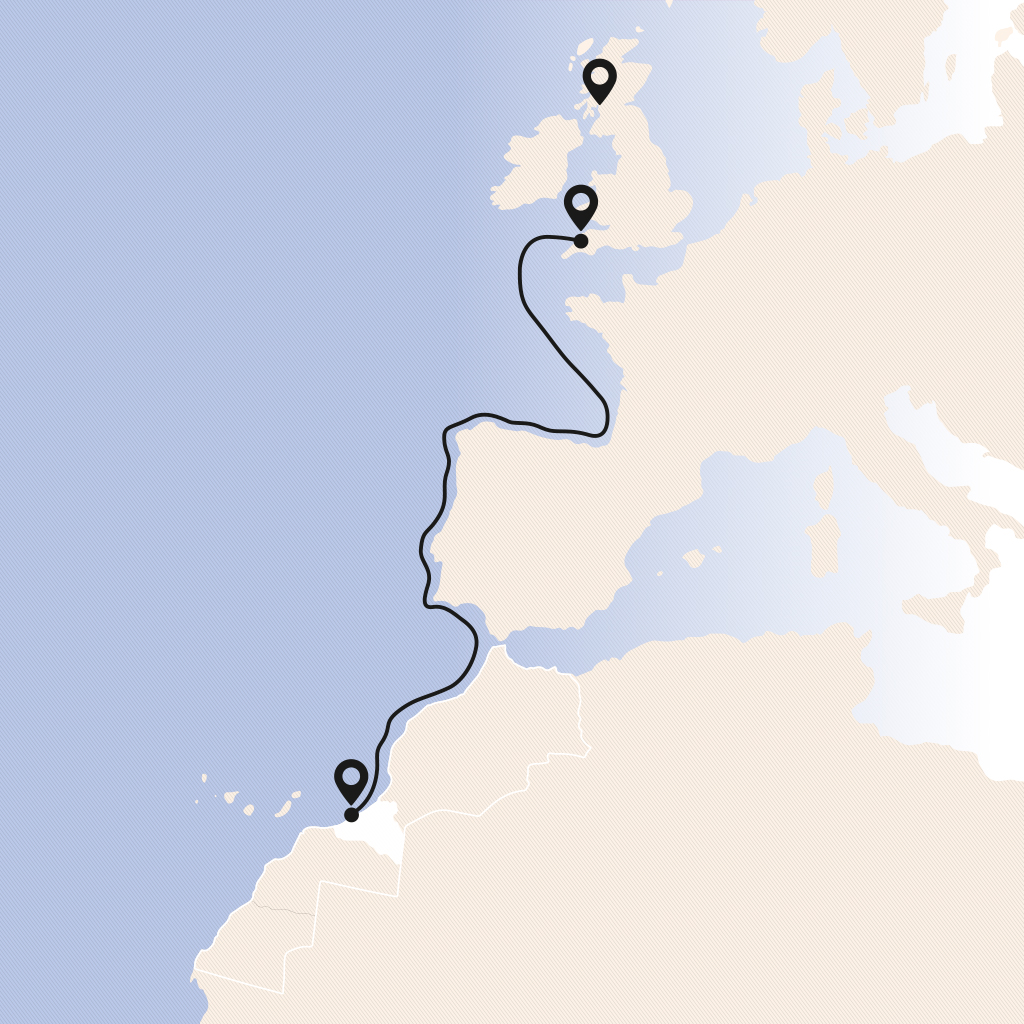In just a few years, the longest submarine cable in the world is intended to bring clean electricity from Morocco to Great Britain and lead the island’s countries into climate-neutrality. HIGHVOLT test systems help to make sure that the energy also arrives there reliably.
T
he idea of bringing climate-friendly electricity from Africa to Europe has been around for a long time. Each day, more solar energy than the world needs hits the Sahara sands. But in practice, little has been done with it so far. The XLinks project is changing this: Starting in 2030, renewable electricity will flow from Morocco to Great Britain. The island’s power grid is to be decarbonized by 2035, but domestic solar and wind power are not enough to achieve this. By contrast, in Morocco, the Sahara sun shines more than enough all year round, and the steady trade winds can also be relied upon. In addition, this North African country has become one of the leading nations in renewable energy in recent years. Massive solar thermal power plants, wind farms, and solar parks have already been built, and there is still plenty of room for more in the sparsely populated desert regions
3,800 kilometers
is the length of the route
of the submarine cable
Clean desert electricity
For the XLinks project, solar and wind power plants with a total capacity of 10.5 gigawatts will be built on an area of 1,500 square kilometers in the Guelmim-Oued Noun region. Combined with a battery storage facility with a storage capacity of 20 gigawatt hours, once completed it will ensure that energy can flow reliably to far-away Great Britain for an average of more than 20 hours per day, where it can be provided as base load. The electricity would then cover eight percent of the country’s total demand. Four submarine cables will have to be laid over a distance of 3,800 kilometers past the European mainland to bring the desert power to the island using high-voltage direct current technology.
10.5 gigawatts
of electricity is generated by the
wind and solar parks in Morocco
A new company has been founded specifically for this mammoth project in Hunterston, Scotland: XLCC. It manufactures the HVDC submarine cables with aluminum conductors and cross-linked polyethylene (XLPE) insulation and will also lay them on the sea floor.
20 kilometers of cable
In the future, the plant will manufacture cable lengths of 20 kilometers in one piece. Using joints, these will then be connected on the ship laying them to form 100-kilometer sections. The demands on the quality of the cables are enormous, since once they are sunk to the bottom of the sea it is next to impossible to make any later repairs. Therefore, before they are loaded, it is necessary to check them for defects in the insulation and connecting joints. However, there are only a few companies that can build testing equipment for such cable lengths. So XLCC turned to HIGHVOLT in Dresden, the world’s leading supplier of high-voltage and high-test systems.
7 Million
British households will be supplied
with electricity in this manner
Anne Cholawa, project manager at HIGHVOLT and the person responsible for this largest order in the company’s history to date, makes it clear: “Testing cables of this length is anything but trivial. The longer a cable or cable system is, the higher the power of the test system must be.” For testing DC and AC cables, power frequency withstand voltage tests based on the resonance principle together with partial discharge measurement is now the standard. Since there is a worldwide trend to put longer and longer cables under water and conventional test systems quickly reach their limits, HIGHVOLT developed special extra-large reactors some years ago.
XXL-sized reactor

The XXL-sized reactor was developed specially
for testing super-long cables.
They are the centerpiece of the test system for super-long cables and in the resonance testing method provide four times the power at just twice the volume of previous reactors. “This means that the test system isn’t so huge despite the enormous power,” says Cholawa. The test system is modularly extendable and could even test cable lengths of up to 200 kilometers.
This means that XLCC remains flexible for the future, since it also wants to supply submarine cables for other megaprojects beyond the XLinks project. Company CEO Alan Mathers is satisfied: “Our goal is to provide the connectivity needed for renewable energy to secure future global energy needs. Working with HIGHVOLT and our other expert partners will make it possible for us to secure future global energy needs.”
Your contacts
 Do you have questions about the project?
Do you have questions about the project?
Dr. Mario Jochim are there for you:
M.Jochim@highvolt.com
 Do you have questions about the project?
Do you have questions about the project?
Anna Cholawa are there for you:
A.Cholawa@highvolt.com
